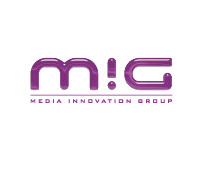 Eugene Becker is Director, Analytics of the Media Innovation Group (The MIG), WPP Group’s proprietary technology firm.
Eugene Becker is Director, Analytics of the Media Innovation Group (The MIG), WPP Group’s proprietary technology firm.
AdExchanger.com: What is your perspective on the attribution challenge within the broader context of measurement and analytics?
EB: We see the lack of a viable attribution metric as a central, if not the central dilemma facing digital marketers. The industry is drowning in data, but decision-making remains subjective because marketers know that the last ad model can lead to wildly suboptimal decisions. A typical case is where bottom-funnel tactics receive the entire budget, while the top-funnel sites that are actually driving demand get little or nothing. If no one has faith in the metrics, the accountability model suffers. At the end of the day, the growth and power of digital media is constrained because we are still facing this fundamental measurement challenge.
How is the MIG’s attribution offering unique?
In developing ZAP Attribution, we focused on two major gaps in the market – lack of objectivity and lack of accountability.
Prevalent attribution solutions rely on an analyst to assign weights to different impressions. However, the rationale for these weights is ultimately subjective. This is the objectivity challenge that we solved – ZAP Attribution is powered by an algorithm that determines the impact of each impression on conversion. ZAP Attribution is one hundred percent data-driven. There are no assumptions, and the model delivers fact-based, unbiased results. This in and of itself is an important step forward for the industry.
The second issue is accountability. The attribution challenge goes beyond merely assigning credit beyond the last impression. The attribution algorithm should accurately predict the impact of an optimization decision on performance. We have benchmarked ZAP Attribution relative to the last ad model in terms of its predictive power and our solution outperforms by a wide margin. This means that optimization decisions based on ZAP Attribution metrics will actually deliver the intended gains in performance. It is this gain in predictive power that differentiates ZAP Attribution from other solutions on the market and will be the driving force behind its adoption.
How does data drive the model?
Our Zeus Advertising Platform (ZAP) and its suite of applications, including ZAP Attribution, are built on the comprehensive data foundation of user-level data stored in the Zeus data warehouse. The ZAP Attribution model leverages this atomic-level data and incorporates the core drivers of performance across media, frequency and recency along with other factors. Because ZAP has robust cross-channel tracking capabilities, the model is applicable across all digital channels. For example, we can determine the impact of display on search or affiliate marketing. These capabilities enable marketers to understand complex cross-channel relationships, identify the true drivers of conversion and maximize the value of their media investments.
Last ad attribution has survived for a decade. What do you see as the evolution path?
The last ad model has become entrenched in the industry by default, as its longevity is predicated on the fact that no one has successfully commercialized a better solution. The demand for such a solution is quite palpable across agencies and marketers. With the launch of ZAP Attribution, all signs point to rapid adoption moving forward. We believe that robust attribution capabilities will quickly become a competitive prerequisite across the ecosystem. At the end of the day, digital marketers must move beyond the last ad to accurate and fact-based attribution to deliver the marketing effectiveness and the accountability needed to grow the digital channel.
Follow TheMIG (@migtweets) and AdExchanger.com (@adexchanger) on Twitter.












